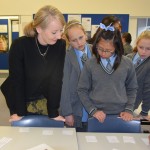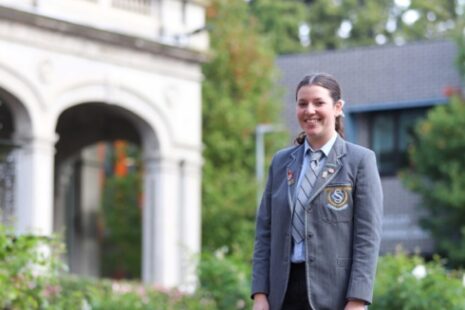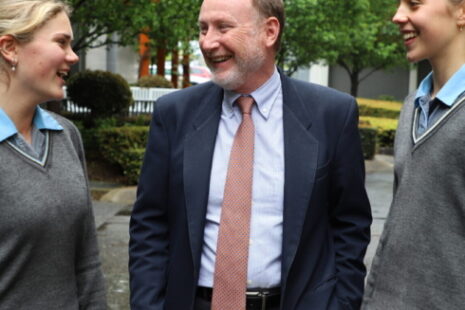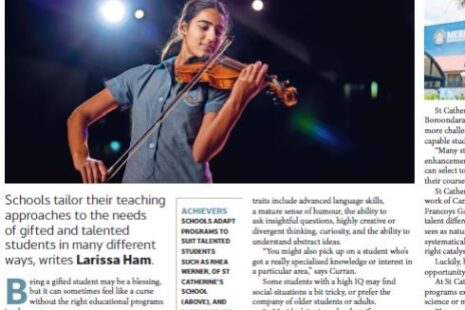Developing Passion and Confidence for STEM

To improve rates of participation by women in technology jobs, we need to capture girls’ interest early, providing opportunities for them to experience the creative side of ICT and highlighting role models and diverse career paths while moving away from stereotypes.
With the commencement of the Barbreck STEM (Science, Technology, Engineering and Mathematics) program this year, the Junior School is a hive of activity every morning before School. On Monday, I curiously ventured through the police tape of a Barbreck crime scene to be met by a group of budding Years 5 and 6 crime scene detectives set with the task of solving the mystery of a missing puppy. At the conclusion of their Forensic Investigations Unit, students were able to solve the mystery by using a logical process of deductive reasoning and applying previously learned scientific techniques to collect evidence used to comprehend information about the crime. This certainly provided an exciting step into School for the week ahead.
During the morning STEM session, the girls collected and examined soil samples, analysed handwriting and fingerprints collected from over 20 staff members (the ‘alleged’ suspects) and measured tread types in footprint casts, to narrow the range of possible suspects. The girls’ enthusiasm was spirited by the task – I observed their brilliant team work and collective problem solving strategies as they examined the range of evidence with the mindset of a forensic scientist. At the conclusion of the activity, the girls were also required to differentiate between fact and opinion to then provide a persuasive argument articulating the clues and evidence gleaned from their examination of the crime scene.
STEM pervades every part of our lives. The development of the STEM in the Morning program in Barbreck this year intends to expose students to STEM-related concepts and, through this exploration, develop within the girls a passion and confidence for STEM and an interest in pursuing a job in this field. A curriculum that is STEM-based explores authentic experiences to enable learning. The activities provide ‘hands-on and minds-on’ lessons for the students. The ‘hands-on, minds-on’ philosophy was abundantly clear on Monday morning, as well as making Mathematics and Science fun and interesting for our students.
STEM – T is for Technology
At our recent Staff Professional Learning Day, Dr Jenine Beekhuyzen from Griffith University provided an interesting keynote address to staff about the Tech Girls Movement emerging across Australia. The Movement is a non-profit organisation promoting positive female information technology role models to encourage and raise awareness of technology career options for girls. “It is no secret that the Information Technology (IT) industry lacks women. Most agree the industry lacks diversity and the unique female perspective that can bring new creative ideas to technology development teams. Thus as an industry, we need to get creative in finding innovative ways to attract females to technology careers,” explained Dr Beekhuyzen.
Beekhuyzen highlighted the fact that Australia’s digital economy is now considered to be worth $79 billion and predicted to grow to $139 billion by 2020 (Deloitte Access Economics). To power this growth and ensure Australia does not miss out on these opportunities, a workforce of young people with skills in computational thinking and Computer Science is required. This means boosting participation and engagement with students today, so they can have the jobs of tomorrow.
Australia will need an extra 100,000 people skilled in ICT by 2020 if it is to keep pace with rising demand. However, in the last decade, despite a 31 per cent growth in industry employment, the number of young people commencing IT courses at university has fallen by over 50 per cent.
The growth of Australia’s tech industry is constrained by the fact that we are not producing enough software engineers. A big part of this is because we are not encouraging young people, particularly young women, to study Computer Science and IT. Australia has a chronic shortage of women graduating with Computer Science or coding skills. Since 2001, the rate of women enrolling in an IT degree has actually fallen from approximately one in four to just one in 10 (Australian Financial Review, 2/2/2014).
Beekhuyzen also highlighted that women could be left out economically, “shut out from influential positions in industry and government due to lack of relevant skills and experience,” and subsequently perpetuate the gender gap in Australian IT in which currently:
- Only 28 per cent of workers in the ICT are women
- Only one in five tech entrepreneurs are women
Beekhuyzen concluded how crucial it is that young women learn to code and consider careers in ICT, as early as possible, to have a stake in shaping the world of the future. To improve rates of participation by women in technology jobs, we need to capture girls’ interest early, providing opportunities for them to experience the creative side of ICT and highlighting role models and diverse career paths while moving away from stereotypes.
In addition to the Morning STEM program in Barbreck, our Year 3 students also enjoy lessons by Senior School Science teacher, Ms Megan Vu, to engage and inspire students with a range of STEM related learning experiences. This has included learning coding techniques using programs such as Scratch and Tynker and exploring electrical circuits using the ‘littleBits electronics’ kits.
In Year 5 students enjoy a weekly Genius Hour that engages, empowers and motivates them to follow their passions in the classroom. Inspired by search-engine giant, Google, Genius Hour allows our students to be creative with their education and develops their 21st Century thinking skills, including collaboration, communication, creativity and critical thinking, all essential for the careers of the future.
Genius Hour along with our STEM programs provide students with a platform to be creative, inventive and imaginative. Students enjoy learning fundamental computer coding and concepts, developing electronic circuitry skills, hands on 3D design and construction, designing and implementing their own scientific investigations through alliances with the Australian Academy of Science and the CSIRO.
All of these activities encourage our students to be active participants in their learning and develop their problem solving and STEM skills, providing them with the best tool box for their futures.






